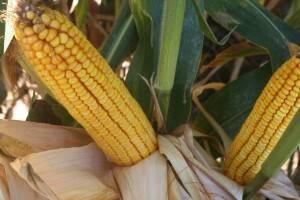As you know, there are about one thousand factors that determine the yield in any crop year. Continual crop improvement, including higher yield, is a common desire among farmers.
 Many of the decisions you make that influence yield the most are made before any seed goes in the ground, so today I’m sharing with you the Top 10 factors I believe are most critical to increasing corn yields in the year ahead:
Many of the decisions you make that influence yield the most are made before any seed goes in the ground, so today I’m sharing with you the Top 10 factors I believe are most critical to increasing corn yields in the year ahead:
- Hybrid Selection. Not all hybrids are created equal, so be sure to select the hybrids that are best suited to your need – and your ground. Some hybrids are better for suited for silage or grain. Some racehorse hybrids have different fertility requirements. Be sure to select the hybrid for each field in the correct maturity.
- Crop Rotation. Crop rotation requires more planning today. It’s not enough to rotate between crops. Remember to also rotate traits and chemistries. Consider management practices that include weed control and residue management.
- Planting Depth and Row Spacing. Planting depth should be between 1.5 and 2 inches but no shallower. Even planting depth with no seed bounce is imperative to a good stand and high yields. Uneven emergence can create uneven competition between plants that continues throughout the year. Plus, uneven tasseling can occur. The crop canopy should absorb about 95% of available sunlight so some hybrids with a more upright leaf angle may benefit from narrower rows.
- Soil testing and fertility. Accurate soil samples are necessary, so you can be sure the plants are getting the food they need. There are 16 essential nutrients for plant development, and each one is important in various amounts. A proper balance of macro- and micro-nutrients is necessary for the optimum use of applied fertilizers.
- Timely planting. Planting conditions greatly impact emergence and stand. Remember that early planting dates only have the potential to out-yield later plantings if conditions are right. Don’t “mud it in” just to be the first one in the field! Yield doesn’t significantly decline until later in the planting season, so practice patience. Plant when soil temps are consistently above 50° F and are expected to rise.
- Scouting Fields. Crop scouting begins at the planter. Check planting depth and then emergence. Mid-season crop scouting is especially important because different insect and disease pressures become evident. tissue sampling, fungicide application timing, and finally find out when the field is ready to harvest.
- Weed Pressure and Herbicide Selections. Manage troublesome weeds through crop rotation and other tactics. Know what weeds you are targeting, so you can apply the correct herbicide and rate. Follow up on applications for missed weeds or respray conditions.
- Fungicide applications. Some hybrids in some growing conditions will benefit from one or two applications of a fungicide to keep the plant growing and healthy. You’ll see in the Latham Hi‑Tech Seeds’ product guide that we recommend fungicide for certain hybrids. Remember, the application timing is key for maximum benefit.
- Timely Harvest. Everyone would like to harvest dry corn but sometimes that’s not practical for maximum yield. Scout your fields often to prioritize fields for harvest. Check for stalk lodging potential. Determine stalk integrity with the pinch and push tests. Are the plants getting “rooty,” or leaning and lodging from the root? Conduct a shake test to make sure the ears are still hanging on with less chance of ear droppage and plant health to allow for delayed harvest if necessary.
- Soil Prep for Next Year. Soil tillage or preparation for next year’s crop should help improve soil tilth. Avoid working wet soils to prevent compaction and to provide a consistent seed bed across the field to help achieve good seed-to-soil contact.
Related Posts:
